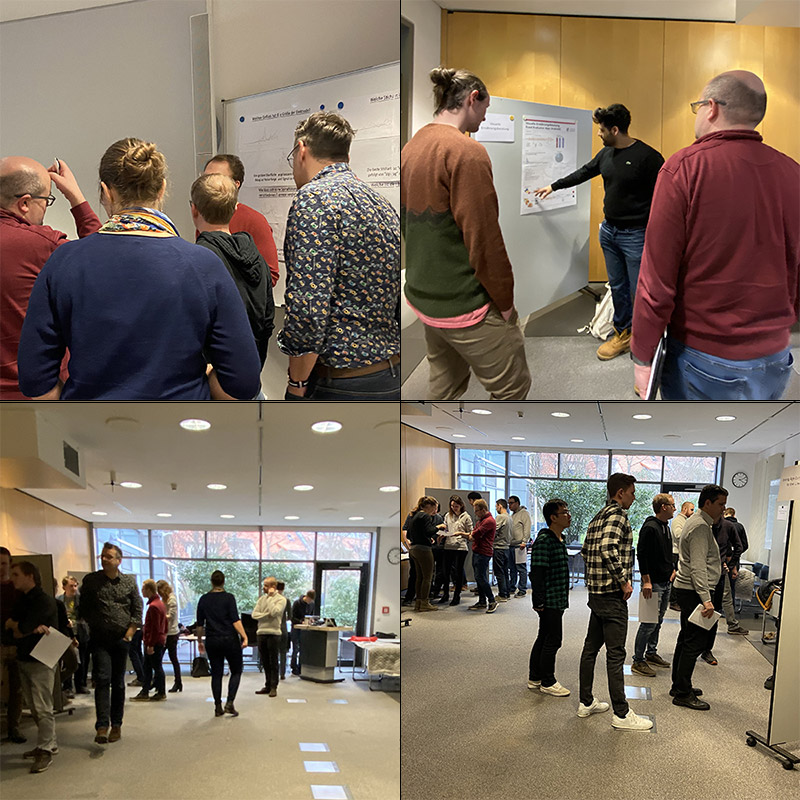Ambient intelligence - practical research at Fraunhofer IGD
Conducting applied research while also going to school: The Interactive Graphics Systems Group at TU Darmstadt makes it possible. The lecture “Ambient Intelligence” is held in close cooperation with Fraunhofer IGD.

In the preceding lectures, students were given an overview of the current technology trends and research findings on which ambient intelligence is based. These include concepts for implementing smart environments, smart networks and objects, mobile augmented reality technology, ubiquitous and pervasive information spaces, nomadic communications, real-time communication and relevant middleware, embedded systems, sensor networks, and wearable computing. At Fraunhofer IGD, students worked in small groups to implement executable ambient intelligence applications, which they presented on February 10, 2020.
One lecture, eight projects
Two groups worked on the project “Boot me up, Scotty!”. Before, firmware – as the name suggests – was stored on ROMs, with subsequent updating only possible by replacing the hardware. However, the trend developed toward making the firmware updatable more and more frequently through flashing. The students programmed an inexpensive and energy-efficient microcontroller to receive firmware updates wirelessly, save them in the flash and boot them up automatically.
Detecting lying position in bed has many advantages, such as in sleep research or to prevent bedsores. One student appreciated these advantages but efforts using earlier capacitive sensor methods were unsuccessful. Instead of using the common loading mode method, he tested the shunt mode method in which a transmit electrode emits frequencies that are received by a receive electrode. The benefit of this method is that it is possible to implement multiple sensors.
There are many exercises using one’s own body weight that can be performed comfortably from home while sitting on the couch. But who is making sure the exercises are also being performed properly? In the “Quantified-Self by Exercise Tracking” project, a mat was trained to track exercises without the use of cameras or wearables, instead using capacitive sensors.
We encounter capacitive sensors in everyday applications¾we all use smartphones. Smart textiles also use this technology. In addition to touch input, proximity to interactive areas (like buttons) can also provide valuable information. In the “What’s the Best Electrode” project, measurements were used to observe the effect that materials, shape and size has on detecting proximity.
Digital forensics, demographic upheavals, social media, identity checks, child protection – there are many areas where it would be useful to be able to tell a person’s age from their face. To this end, students in the “Driving Age Estimation to the Limit” project are training their algorithms and finding out at what age class this, for example, does not yet work so well.
Facial recognition may already work pretty well but all of us have a sort of fingerprint in our eyes: the iris. The goal of the “Iris Identification” project is to be able to flawlessly identify persons by their iris using feature detection and clustering.
Cooking healthy and tasty food at home is pretty easy with a little practice. On the go, however, things often get too hectic and we have to just pick up something quick. We often do not have the time to extensively research nutritional value, which is why a group is working on an app for visual nutritional consultation. This mobile app uses a neural network to determine from photos what foods are healthier and what foods not so much.
 Fraunhofer Institute for Computer Graphics Research IGD
Fraunhofer Institute for Computer Graphics Research IGD